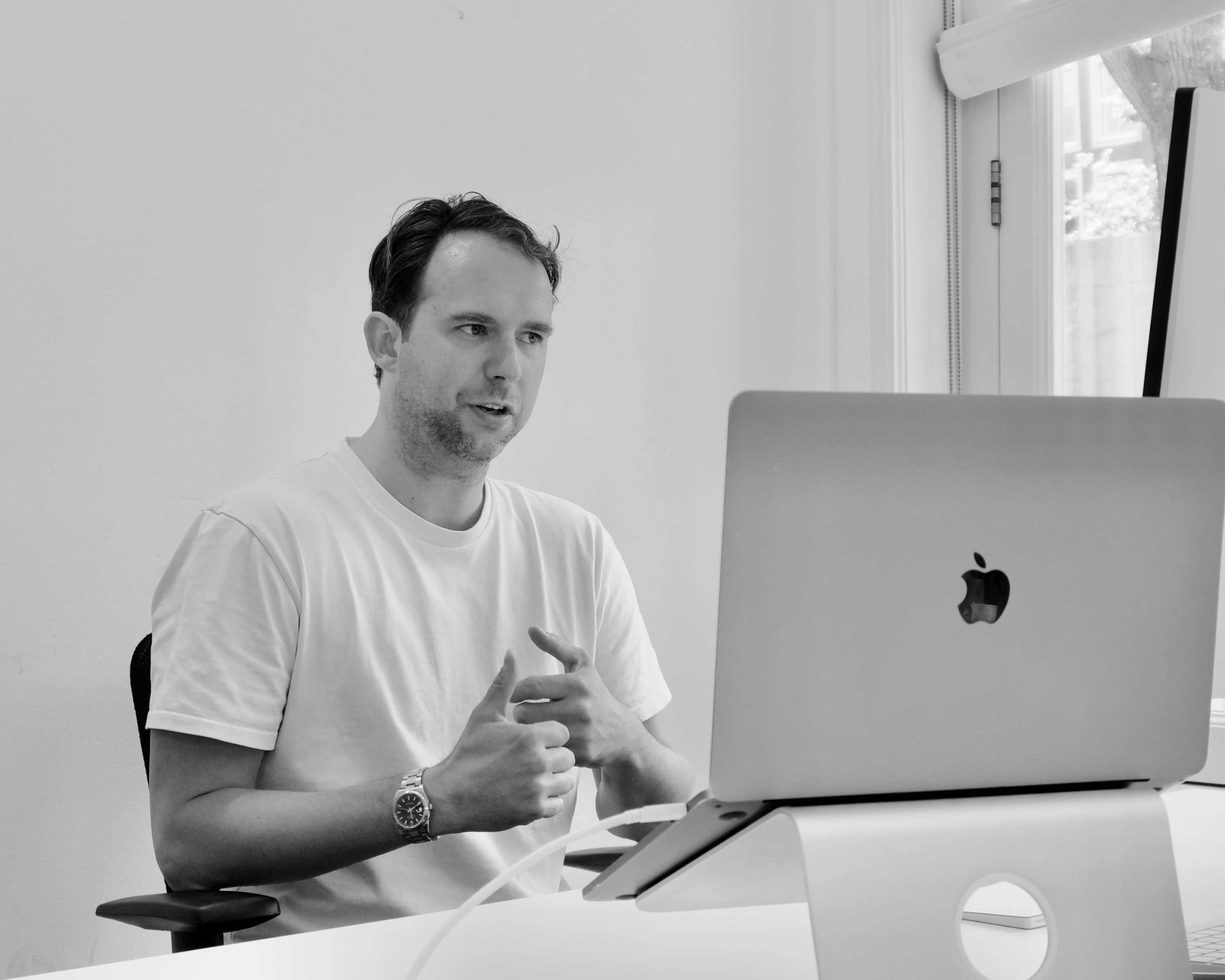How much does early retirement cost annually? Discover the real costs
Do you dream of retiring early? More time for your hobbies, family, or perhaps traveling the world? It sounds fantastic. But before you take that big step, it’s important to know how much early retirement actually costs and how you can secure your financial future. In this blog, we delve into the costs of retiring early and give you tools to calculate what you need. At Vive, we put you and your goals first – let's start by gaining insight into the numbers.
The increased retirement age
First of all, the official state pension age (AOW) has increased in recent years and is likely to continue to rise. Currently, the state pension age is 67 years (and a few months), and this may increase further in the future as it moves in line with life expectancy. Retiring earlier therefore means that you have to bridge an increasingly longer period before you receive your state pension. You will have to finance those intervening years yourself. At Vive, we help you to bridge that period smoothly, but it requires good planning.
How much money do you need?
It is essential to have a good understanding of your monthly expenses and in how many years before the state pension age you want to stop working. Here are the most important factors to consider:
- Monthly expenses: What do you currently spend each month, and which of those costs will continue during your retirement? Consider housing, groceries, insurance, and leisure. Don't forget to factor in inflation over the years – the cost of living usually increases.
- Mortgage and debts: Will your mortgage and other debts be paid off by then? If not, you must also include those monthly costs in your planning for the period that you stop earlier.
- Lifestyle: How do you want to spend your extra free time? Plans such as traveling, going on vacation more often, or expensive hobbies can involve extra costs. Budget these desired activities.
- Wealth tax: If you will eventually have to rely on saved assets, remember that wealth tax (box 3 tax) applies above certain thresholds. This is also an annual “cost” of having assets.
- Allowances and benefits: Which income-related allowances or benefits (such as healthcare allowance) will you lose if you stop working? And can you still get a benefit or compensation somewhere? For example, some people receive an early retirement benefit or partner alimony – which count as income.
By mapping out all these points, you can estimate how much annual income you need if you retire early.
Example calculations
To give you an idea of the costs of early retirement, let's look at two scenarios. We assume an annually required amount of €24,000 (or €2,000 per month in expenses) and a (simplified) constant return on assets of 4% per year on your savings/investments. We also introduce someone who starts saving specifically for early retirement at the age of 45.
Scenario 1: Stop four years earlier
You want to retire at 63, instead of 67. You will then have to bridge 4 extra years. What do you need?
- Number of bridging years: 4 years
- Annual expenses during these years: €24,000
- Total amount required: €24,000 * 4 = €96,000 (in addition to what you will receive later in regular pension/AOW).
Suppose you want to have this amount by the time you are 63, and you start saving/investing for it at 45. With an assumed return of ~4% per year, you would have to set aside approximately €268 per month from the age of 45 to reach €96,000 by the age of 63. (The sooner you start, the lower this monthly amount can be due to the compound interest effect.)
Scenario 2: Stop six years earlier
You want to stop working at 61, so 6 years earlier than the state pension age of 67. The calculation:
- Number of bridging years: 6 years
- Annual expenses during these years: €24,000
- Total amount required: €24,000 * 6 = €144,000.
If you start saving/investing for this goal at age 45, with 4% growth you will need approximately €435 per month from age 45 to have built up approximately €144,000 around age 61.
These examples are simplified! In practice, more factors come into play (such as taxes, precise returns, and inflation). But they give an impression: the sooner you stop working, the more capital you need to have or the more you need to save regularly.
Use your own capital
Fortunately, you don't always have to save everything from scratch. Consider your existing assets: savings, investments, any equity in a home you own, or other assets. These can play an important role in financing your early retirement.
Ask yourself: what part of my assets can I use to pay for those bridging years? Sometimes you have an investment account that you actually have for “later” – maybe you can use it to stop a few years earlier. Or perhaps you can downsize your home and use the surplus value as a supplement. Make sure you have a good overview of your assets and think strategically about how you can use them for your pension plan.
Having your pension paid out earlier
Some pension funds and insurers offer the possibility to have your pension paid out earlier (for example, with a defined contribution plan or individual pension policies). This can slightly increase your monthly income in those first years without work, but there are catches:
- In general, if you start receiving payments earlier, the monthly payment amount will be lower because it has to be spread over more years.
- With an individual pension product such as an annuity (for example, via BrightPensioen or bank savings), legal rules apply: if you start receiving payments earlier, the payout period must last at least 20 years after the start date if you start before the state pension age. So you cannot empty your entire pot in 5 years without further ado; the law wants to prevent you from going broke before your state pension starts.
In short, check the rules of your pension product carefully. Having it paid out earlier can help a bit, but often you will still need your own savings.
Request leave
Did you know that you can also use (unpaid) leave as a stepping stone to early retirement? Since 2021, there is a scheme that allows you to save tax-free leave for up to 100 weeks (over 2 years!). This is intended, for example, to stop working earlier towards your retirement: you save leave days (or buy them with your salary if necessary), and use them at the end of your career. In this way, you are paid as it were with your own saved leave, while you no longer work.
Important to know: this is only possible with your current employer, and if you change jobs, you cannot take those saved days off with you. But if you plan well in advance and you work for an employer where you stay for a long time, you can stop working up to two years earlier by using leave. This makes a significant difference in what you have to finance yourself! Discuss this with your employer if early retirement is your wish; you may be able to make agreements not to take a portion of your vacation days each year but to save them for later.
Early Retirement Scheme (RVU)
Under certain conditions, employers have the option of using the Early Retirement Scheme (RVU) to allow employees to stop working earlier. This temporary measure (running until the end of 2025) means that an employer can give an employee a benefit for a maximum of 3 years before the state pension age to bridge the gap. The benefit is capped at approximately €1,847 gross per month (which is equal to the net state pension benefit), and the employer pays a special tax on this (which is temporarily exempt up to this amount, hence the maximum).
In practice, this means: if your employer cooperates, you could, for example, stop working 3 years before your state pension age and receive €1,847 gross per month until your state pension starts. This is especially relevant if you work in a sector where these types of arrangements are agreed upon in the collective labor agreement (e.g., education, healthcare, government). It is not a right, but something that you must arrange in consultation with your employer.
Retiring early can absolutely become a reality with the right financial planning. Calculate well in advance how much you need annually and start saving or investing early to raise this amount. Make use of all available resources – from your own assets to leave schemes and any employer contributions – to reduce costs.

maak een afspraak
Klaar voor een moderne oplossing voor pensioen of vermogen? Maak vrijblijvend kennis met Vive en ontdek wat kan - voor jouw organisatie.
Complex pensioen, simpel uitgelegd - weet direct waar je staat
Persoonlijk gesprek voor jouw situatie en die van je werkenemers
In 30 minuten meer duidelijkheid dan uren googlen
Alle ruimte voor vragen aan onze ervaren pensioenexperts









